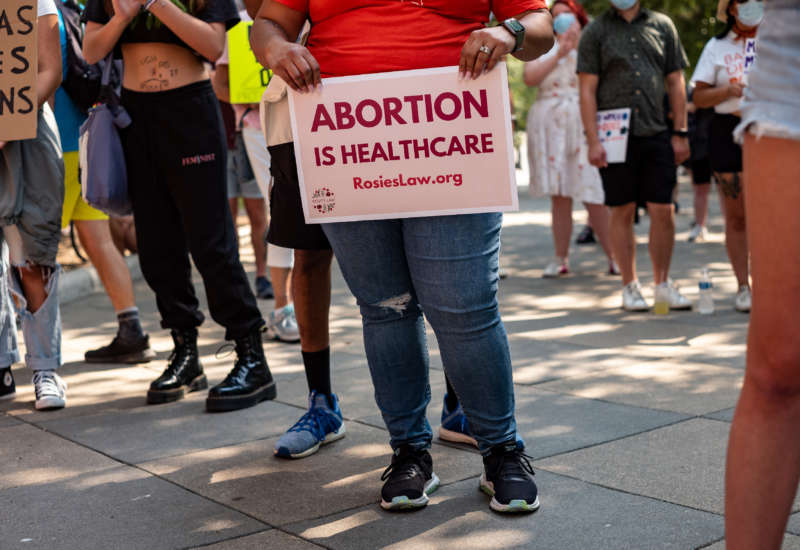Texas’s abortion rate fell by 60 percent in the month after the state’s abortion ban was enacted, according to data released last week by the Texas Health and Human Services Commission.
In August of 2021, providers reported performing about 5,404 induced terminations, or abortions, for Texas residents in the state. After the ban went into effect on the 1st of September, effectively nullifying Roe v. Wade in Texas, providers reported performing only 2,197 abortions that month – about a 60 percent reduction from August’s rate.
September’s rate is also a sharp reduction from the same time the previous year; in September of 2020, providers reported performing 4,511 abortions, or about two times the number of abortions done in September 2021. This is about on par with what researchers found in October of last year.
The agency says that it will be releasing more data from 2021 on a monthly basis, though the numbers may not be uniform because enforcement of the ban has wavered; after it went into effect in September, the policy was struck down by courts and reinstated. However, the policy is likely to stick around indefinitely for now.
Texas’s abortion ban, which was passed by Republican lawmakers last year, is the most restrictive abortion law in effect in the country. The law bans abortion after cardiac activity can be detected, about six weeks into a pregnancy; this time frame has no scientific basis and is so early on in the pregancy that most people don’t even know they’re pregnant. The law doesn’t provide exceptions for cases of rape or incest.
The law is especially cruel because it places the onus of enforcement on private individuals rather than the state, allowing private citizens to sue medical providers that violate the law for $10,000 or more. This essentially dispatches anti-abortion vigilantes to hunt down anyone who has helped an individual get an abortion, including abortion providers or even Uber drivers.
Abortion providers say that the law has cast a widespread chilling effect on medical professionals in the state. One Texas provider told The Lily, for instance, that he used to perform up to 30 abortions a day – but now that the ban is in place, he only performs two or three abortions a day.
Instead, patients have had to travel out of state in order to obtain the procedure. Planned Parenthood centers in surrounding states saw a 1,082 percent increase in patients with Texas zip codes in September of 2021 over the previous two years.
Because providers in the states immediately surrounding Texas, like Oklahoma and Louisiana, have been heavily booked as a result of the ban, Texas residents have had to travel even further to have the procedure done.
In November, the Guttmacher Institute found that Texans have traveled to Illinois, Ohio, Washington, Maryland and other states in order to obtain abortions. A clinic in Tennessee, which is nearly a thousand miles away from Texas, said that it saw double the amount of patients from Texas in September than it did in all of 2020.
Not only is this a potentially expensive trip for patients, it can also be an especially dangerous trip during the pandemic. People who are pregnant or who have recently been pregnant are at a higher risk of getting severe illness from COVID-19.
Such trips may become far more common if the Supreme Court decides to overturn Roe v. Wade this year, as the Court’s conservative justices seem poised to do. According to the Guttmacher Institute, about 26 states are likely or certain to ban abortion as soon as Roe is no longer in effect. This means that the average American would have to travel 250 miles round trip to access their nearest abortion provider.


